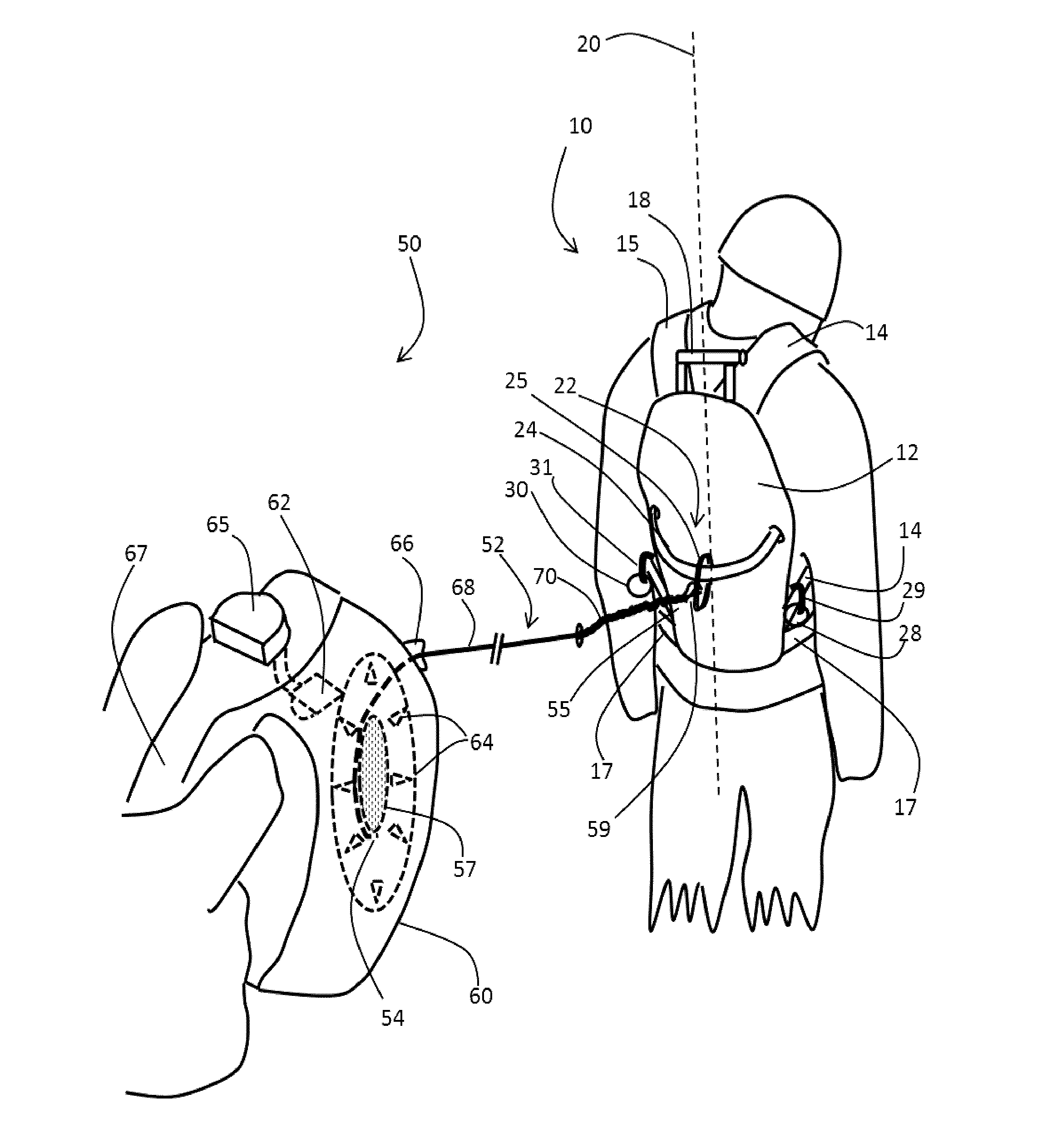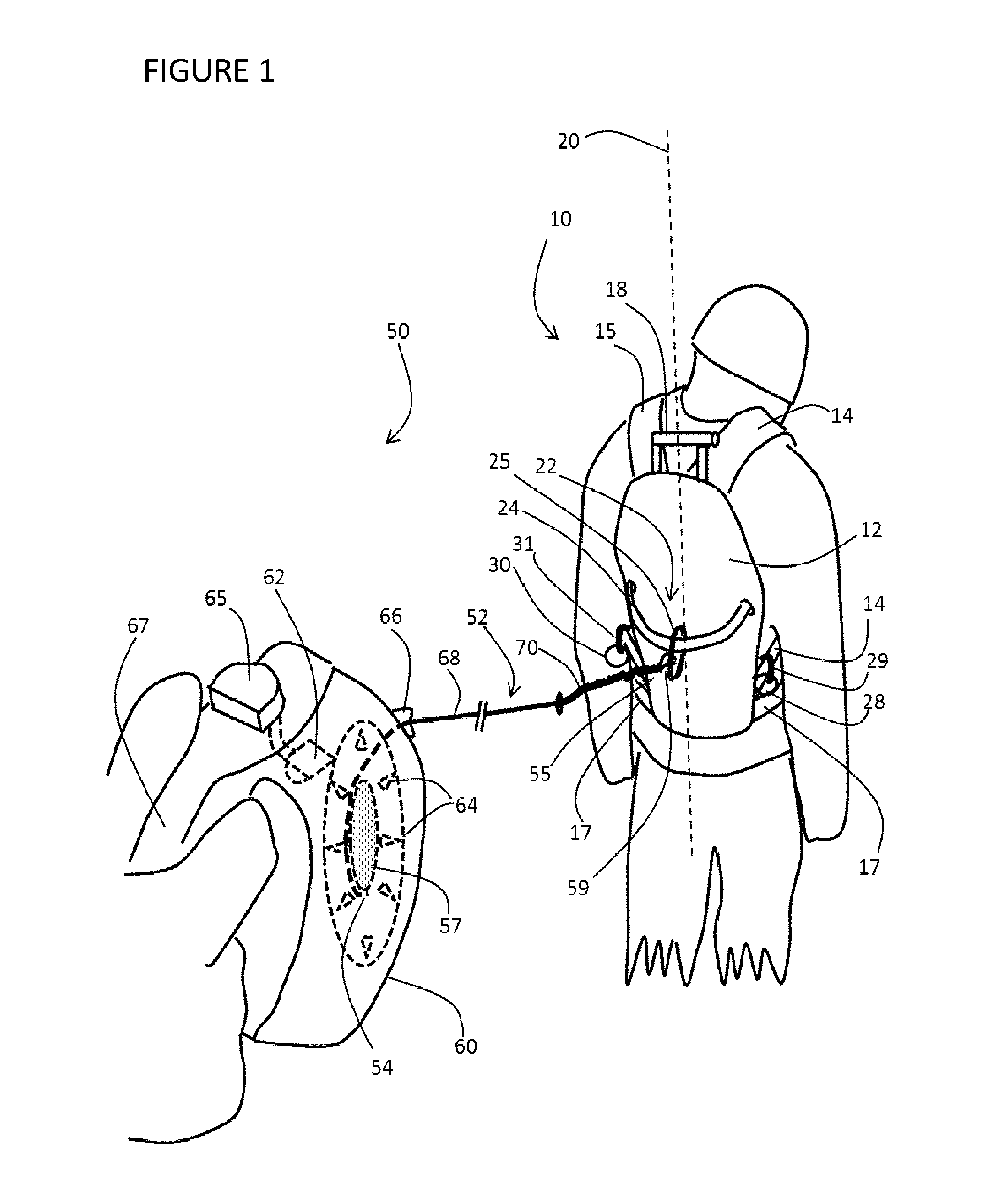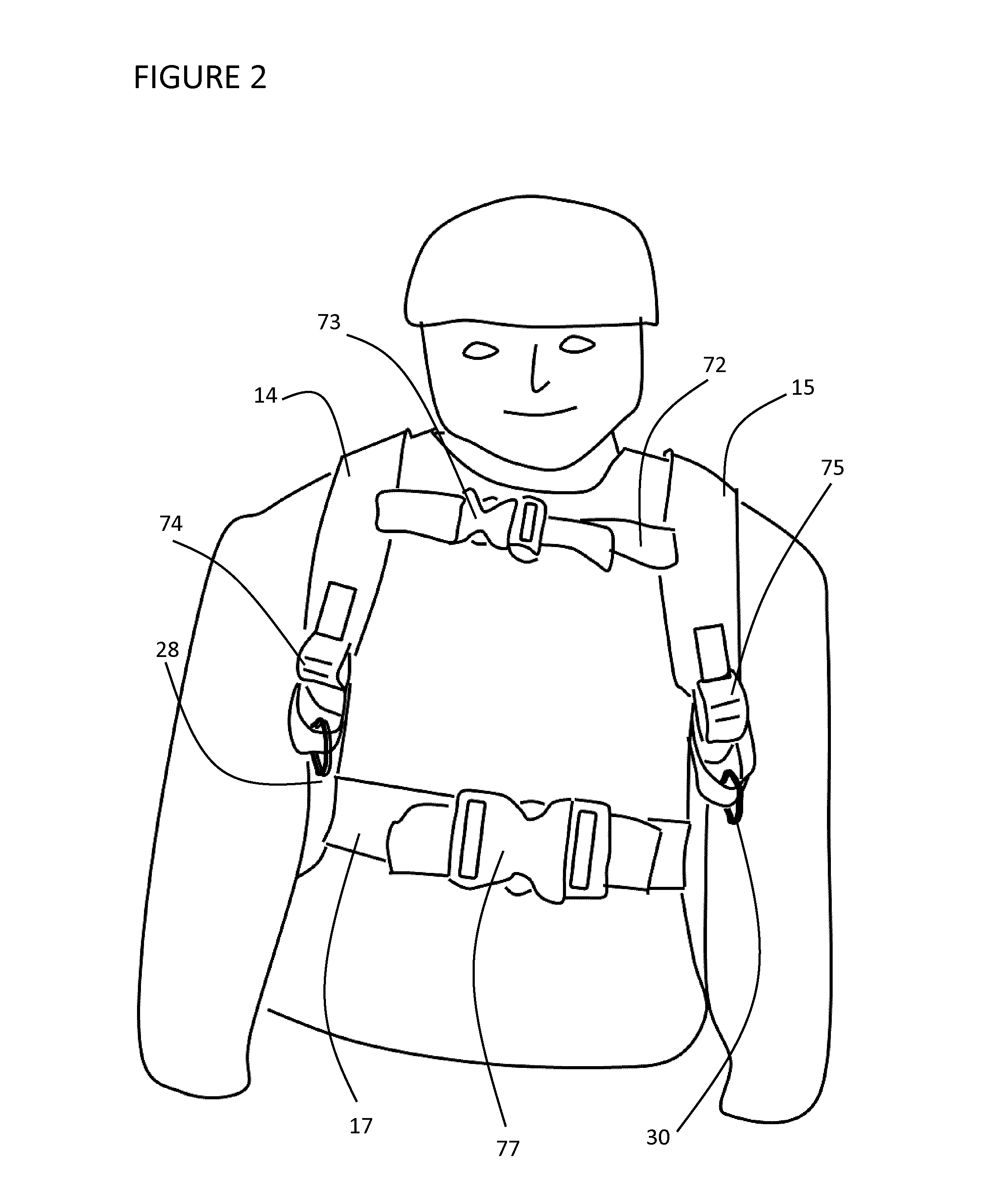Tethered training harness
a training harness and tie-down technology, applied in the field of training harnesses, can solve the problems of entanglement of reins or tethers, many repetitions and failures, and difficulty in storing reins or tethers,
- Summary
- Abstract
- Description
- Claims
- Application Information
AI Technical Summary
Benefits of technology
Problems solved by technology
Method used
Image
Examples
Embodiment Construction
[0021]Referring to the drawings, FIG. 1 shows a training harness 10 with a retractable tether 50.
[0022]The training harness comprises a back panel 12, a pair of shoulder straps 14, 15, and a waist strap 17. The pair of shoulder straps 14, 15 and the waist strap 17 are connected to the back panel 12. A handle 18 is connected at a top portion of the back panel 12.
[0023]The back panel 12 has a generally elongate shape defining a longitudinal direction and a transverse lateral direction. The back panel 12 and shoulder straps define a longitudinal line of symmetry 20. The handle 18 is oriented transverse to the line of symmetry 20.
[0024]A runner 22 providing a slidable connection point for retractable tether 50 is also oriented transverse to the line of symmetry 20. Runner 22 comprises an arcuate rod 24 and a closed ring 25 that slides along the length of the arcuate rod 24. The closed ring 25 provides a slidable anchor point connecter for the retractable tether 50. The arcuate rod 24 co...
PUM
 Login to View More
Login to View More Abstract
Description
Claims
Application Information
 Login to View More
Login to View More - R&D
- Intellectual Property
- Life Sciences
- Materials
- Tech Scout
- Unparalleled Data Quality
- Higher Quality Content
- 60% Fewer Hallucinations
Browse by: Latest US Patents, China's latest patents, Technical Efficacy Thesaurus, Application Domain, Technology Topic, Popular Technical Reports.
© 2025 PatSnap. All rights reserved.Legal|Privacy policy|Modern Slavery Act Transparency Statement|Sitemap|About US| Contact US: help@patsnap.com



